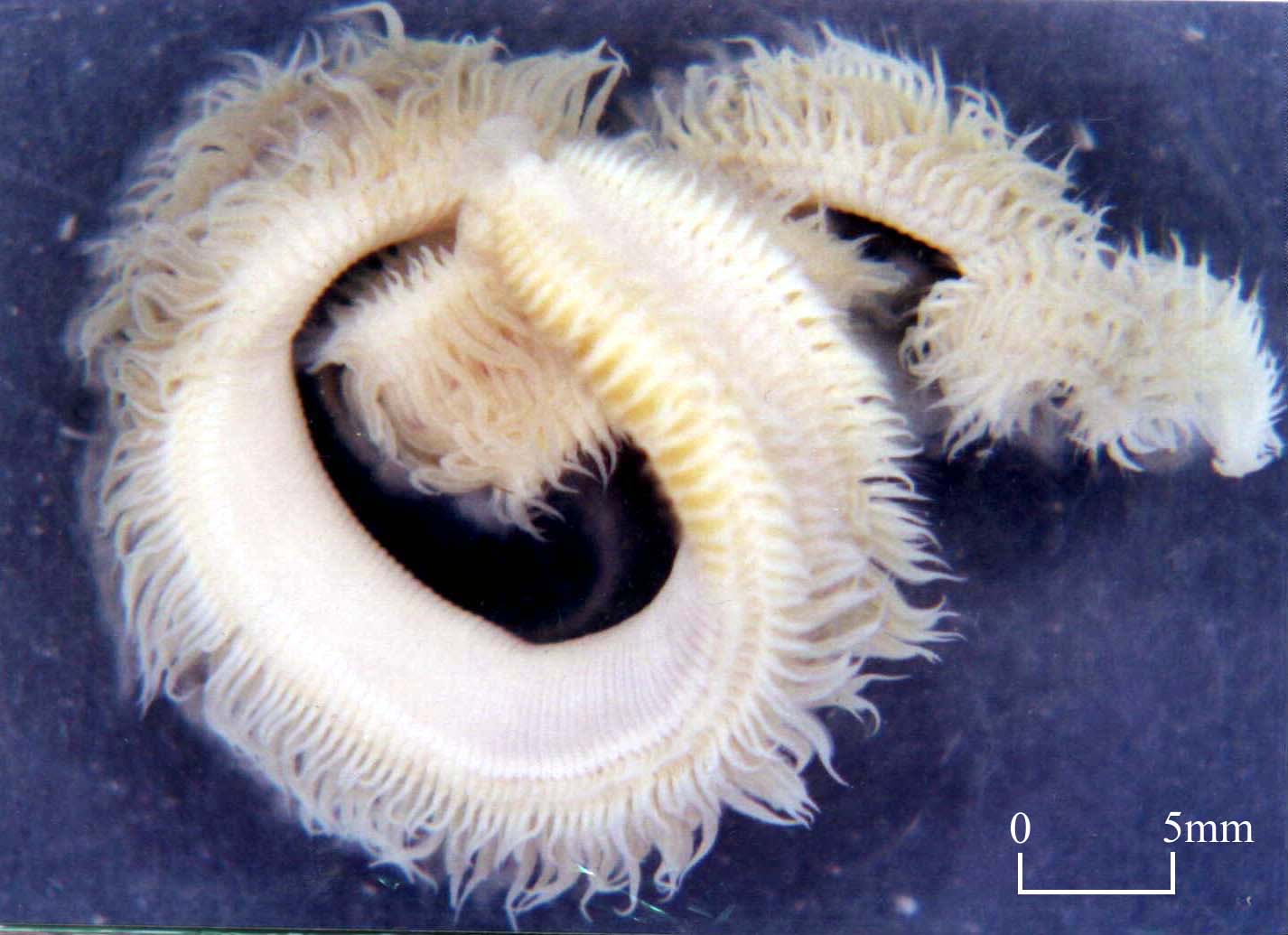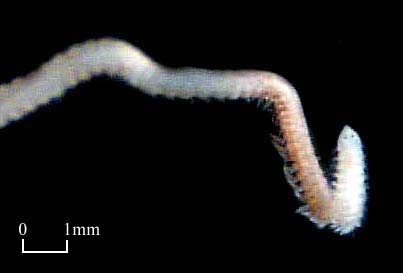Order Orbiniida
Family Orbiniidae
Features |
| Body: |
long and thread-like; divided into 2
regions - thoracic region with lateral parapodia and abdominal region with dosal parapodia |
| Prostomium: |
conical and no appendage; with 1 or 2
asetigerous anterior segments |
| Peristomium: |
no appendage |
| Eye: |
absent or 2 |
| Antennae: |
absent |
| Cirri: |
absent |
| Palp: |
absent |
| Pharynx: |
eversible and sac-like |
| Parapodium: |
biramous |
| Setea: |
simple including capillaries, simple hooks
brush-topped, bifid or furcate setae |
| Anal cirri: |
4 |
| (Fauchald 1977) |
Biological Notes
Orbiniids burrow in sandy mud and
ingest particulate organic matters. They do not make permanent tubes.
The pointed prostomium and flattened, muscular anterior region are for burrowing.
The respiratory and digestive gills are protected by the whole dorsal
parapodium. Some orbiniids with rounded prostomia such as Naineris
and Proscoloplos can be found on rocky shores among the holdfasts of algae (Day
1967).
Scoloplos
tumidus is a new species reported from Hong Kong (Mackie 1991). It was
found in the intertidal sand at Sai Keng, Three Fathoms Cove and Tolo Channel in 1986 and
1989.
Genera and Species Reported in Hong Kong
Leitoscoloplos kerguenlensis
Orbinia sp.
Phylo kupfferi
Scoloplos tumidus*
* new species |

